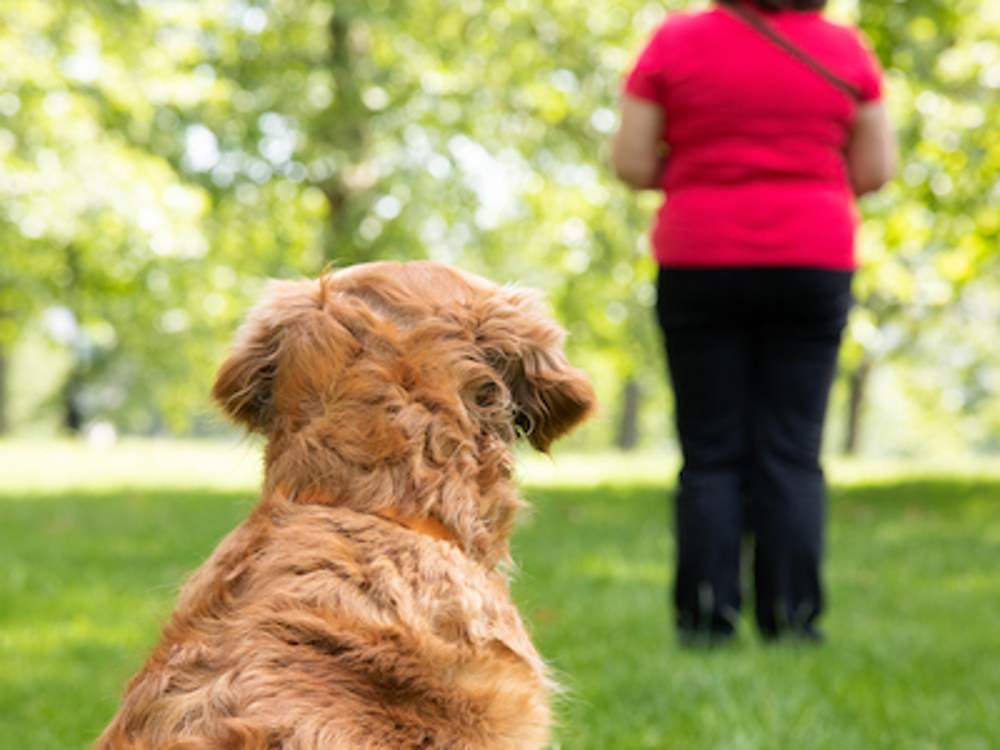
Have you been away from training for a while? Here are some tips to get you back into training mode!
- Thinking time - take a stroll around the garden and spend some time thinking about the strengths and weakness of your training. Think about your dog’s age. At what point in their development were they when you stopped training, and where are they now? You may need to adjust for their hormonal, growth and strength changes. Hopefully during lockdown you will have managed to continue to carry out an element of training with your dog, but test a few things out in the safety of your garden or even indoors. What do you need to improve on? What do you need to introduce? What are you both good at? Make a plan of action!
- Health and well-being – have you kept yourself and your dog fit during your time out? If not, then you need to build up slowly. Include some warm-up exercises into your daily routine – yes, dogs need them too! The slow stretch of a bow, the rise of paws on a low stool or step, the circle both ways of a slow twirl and twist, these will all get your dog feeling more flexible and will lead to fewer strains
- Back to basics - refresh what your dog already knows by going back to basics. Think about how you taught things. Revisit any paperwork you have been given by your instructor or have a conversation with your instructor if you can’t remember. Remember the basics in ensuring your dog is engaged with you and that you have treats and rewards at the ready, and maybe familiarise yourself with some of the training techniques available on our website
There are 10 core exercises/concepts that all dogs should be taught
- Marker words to know when they have got it right (and when they will get a reward) and another word to know when you have finished the exercise (a terminating cue)
- Statics – such as sit, down, stand – to help them to stop or prevent jumping up on you or others
- Stay/wait (stay there)
- Settle (on a bed or blanket or wherever told)
- Leave (don’t touch or give if you have it)
- Pay attention (listen to me, watch me)
- Walk on a loose lead (not pulling on a lead)
- Come back when called
- Stop when told
- Play – enjoy playing with a toy – games like fetch, find, tug are all good
Other considerations
Enrichment – include some exercises that will appeal to your dog’s natural behaviours. Nosework is a must for all dogs – it is so all-engaging; they use lots of mental and physical energy and they will love you even more for helping them enjoy their noses!
Reality check – when you go back to basics and train the core 10 exercises as above, are you sure your dog knows them well? Will they do them when you need them to? Make sure your training includes the gradual addition of real distractions so that your dog is prepared for all eventualities. Help them to get it right. You are not out to trick your dog, just to give them the skills to be the best dog they can be.
In conclusion, stay safe – when you do venture out, take it carefully and gradually. Keep your dog on a lead or use a long line to ensure the safety of your dog and others in a public place. Social distancing with your dog has never been so important, but it’s good manners at any time. Not everyone will appreciate your dog’s attention, even if they are friendly. Be alert!
Please note: there are many different ways to train your dog. This is just one method of teaching. If you are ever in doubt, please seek professional advice.
For more information and advice, you can find training classes with The Kennel Club Good Citizen Dog Training scheme, browse our full list of The Kennel Club Accredited Instructors or find a dog training club near you.
